NPs Basic Information
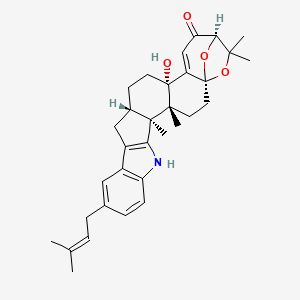
|
Name |
Paspalitrem A
|
| Molecular Formula | C32H39NO4 | |
| IUPAC Name* |
(1S,4R,5S,16S,19S,23R)-19-hydroxy-4,5,24,24-tetramethyl-11-(3-methylbut-2-enyl)-25,26-dioxa-7-azaheptacyclo[21.2.1.01,20.04,19.05,16.06,14.08,13]hexacosa-6(14),8(13),9,11,20-pentaen-22-one
|
|
| SMILES |
CC(=CCC1=CC2=C(C=C1)NC3=C2C[C@H]4[C@]3([C@]5(CC[C@]67C(=CC(=O)[C@H](O6)C(O7)(C)C)[C@@]5(CC4)O)C)C)C
|
|
| InChI |
InChI=1S/C32H39NO4/c1-18(2)7-8-19-9-10-23-21(15-19)22-16-20-11-12-31(35)25-17-24(34)27-28(3,4)37-32(25,36-27)14-13-29(31,5)30(20,6)26(22)33-23/h7,9-10,15,17,20,27,33,35H,8,11-14,16H2,1-6H3/t20-,27-,29+,30+,31+,32-/m0/s1
|
|
| InChIKey |
WCISYVSWAOUFIY-TZHHUJIHSA-N
|
|
| Synonyms |
Paspalitrem A; Y875DQ8L6K; CHEMBL4555220; (3R,5BS,7AS,13BS,13CR,15AS)-5B-HYDROXY-2,2,13B,13C-TETRAMETHYL-10-(3-METHYLBUT-2-EN-1-YL)-2,3,5B,6,7,7A,8,13,13B,13C,14,15-DODECAHYDRO-4H-3,15A-EPOXYOXEPINO(2'',3'':5',6')BENZO(1',2':6,7)INDENO(1,2-B)INDOL-4-ONE; 4H-3,15A-EPOXY-1-BENZOXEPINO(6',7':6,7)INDENO(1,2-B)INDOL-4-ONE, 2,3,5B,6,7,7A,8,13,13B,13C,14,15-DODECAHYDRO-5B-HYDROXY-2,2,13B,13C-TETRAMETHYL-10-(3-METHYL-2-BUTEN-1-YL)-, (3R,5BS,7AS,13BS,13CR,15AS)-
|
|
| CAS | 63722-90-7 | |
| PubChem CID | 10028978 | |
| ChEMBL ID | CHEMBL4555220 |
*Note: the IUPAC Name was collected from PubChem.
Chemical Classification: |
|
|
|---|
——————————————————————————————————————————
NPs Species Source
| Endophyte ID | Endophyte Name | Family | Genus | Taxonomy ID | GenBank ID | Closest GenBank ID | Reference | |
|---|---|---|---|---|---|---|---|---|
| Endophyte ID | Endophyte Name | Family | Genus | Taxonomy ID | GenBank ID | Closest GenBank ID | Reference |
NPs Biological Activity
| Bioactivity Name | Target ID | Target Name | Target Type | Target Organism | Target Organism ID | Potency of Bioactivity | Activity Type | Value | Unit | Endophyte ID | Endophyte Name | |
|---|---|---|---|---|---|---|---|---|---|---|---|---|
| Bioactivity Name | Target ID | Target Name | Target Type | Target Organism | Target Organism ID | Potency of Bioactivity | Activity Type | Value | Unit | Endophyte ID | Endophyte Name |
NPs Physi-Chem Properties
| Molecular Weight: | 501.7 | ALogp: | 5.1 |
| HBD: | 2 | HBA: | 4 |
| Rotatable Bonds: | 2 | Lipinski's rule of five: | Rejected |
| Polar Surface Area: | 71.6 | Aromatic Rings: | 7 |
| Heavy Atoms: | 37 | QED Weighted: | 0.5 |
——————————————————————————————————————————
NPs ADMET Properties*
ADMET: Absorption
| Caco-2 Permeability: | -4.782 | MDCK Permeability: | 0.00002010 |
| Pgp-inhibitor: | 0.973 | Pgp-substrate: | 0.067 |
| Human Intestinal Absorption (HIA): | 0.006 | 20% Bioavailability (F20%): | 0.01 |
| 30% Bioavailability (F30%): | 0.146 |
——————————————————————————————————————————
ADMET: Distribution
| Blood-Brain-Barrier Penetration (BBB): | 0.969 | Plasma Protein Binding (PPB): | 95.25% |
| Volume Distribution (VD): | 2.606 | Fu: | 3.93% |
——————————————————————————————————————————
ADMET: Metabolism
| CYP1A2-inhibitor: | 0.106 | CYP1A2-substrate: | 0.982 |
| CYP2C19-inhibitor: | 0.767 | CYP2C19-substrate: | 0.815 |
| CYP2C9-inhibitor: | 0.536 | CYP2C9-substrate: | 0.051 |
| CYP2D6-inhibitor: | 0.485 | CYP2D6-substrate: | 0.149 |
| CYP3A4-inhibitor: | 0.912 | CYP3A4-substrate: | 0.936 |
——————————————————————————————————————————
ADMET: Excretion
| Clearance (CL): | 12.623 | Half-life (T1/2): | 0.045 |
——————————————————————————————————————————
ADMET: Toxicity
| hERG Blockers: | 0.609 | Human Hepatotoxicity (H-HT): | 0.732 |
| Drug-inuced Liver Injury (DILI): | 0.213 | AMES Toxicity: | 0.125 |
| Rat Oral Acute Toxicity: | 0.95 | Maximum Recommended Daily Dose: | 0.964 |
| Skin Sensitization: | 0.771 | Carcinogencity: | 0.968 |
| Eye Corrosion: | 0.003 | Eye Irritation: | 0.01 |
| Respiratory Toxicity: | 0.986 |
——————————————————————————————————————————
*Note: the ADMET properties was calculated by ADMETlab 2.0. Reference: PMID: 33893803.
Similar Compounds*
Compounds similar to EMNPD with top10 similarity:
| Similar NPs | Similar Drugs | ||||||
|---|---|---|---|---|---|---|---|
| NPs ID | NPs 2D Structure | Similarity Score | TTD ID | Drug 2D Structure | Similarity Score | ||
| ENC001923 | 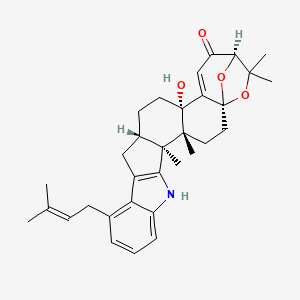 |
0.807 | D0Q0PR |  |
0.240 | ||
| ENC002359 |  |
0.597 | D0W6DG | 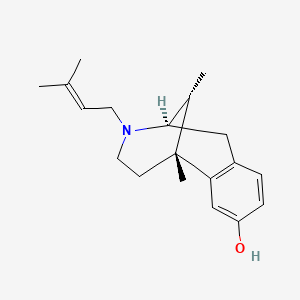 |
0.238 | ||
| ENC003875 | 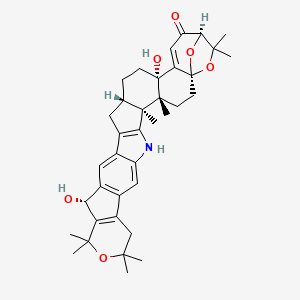 |
0.589 | D06IIB | 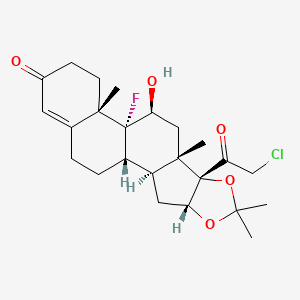 |
0.230 | ||
| ENC002168 | 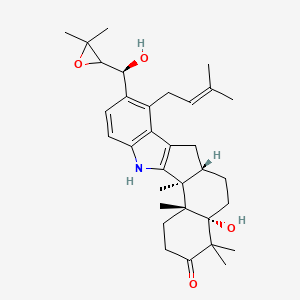 |
0.507 | D04GJN | 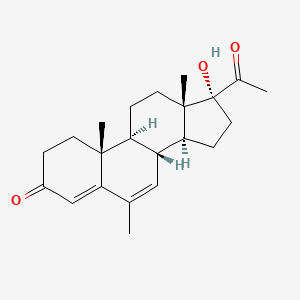 |
0.230 | ||
| ENC003876 | 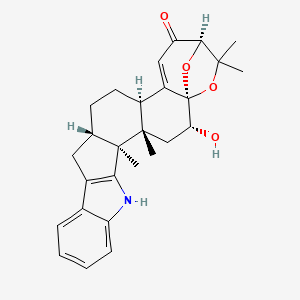 |
0.451 | D06YFA | 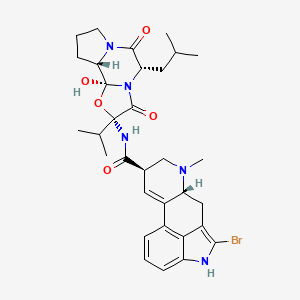 |
0.227 | ||
| ENC001492 | 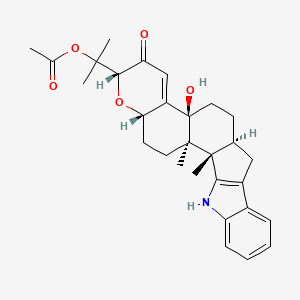 |
0.449 | D02JNM | 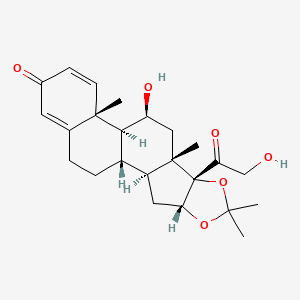 |
0.225 | ||
| ENC000836 |  |
0.444 | D0V4WD | 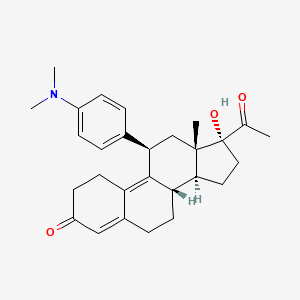 |
0.223 | ||
| ENC002013 |  |
0.438 | D06FPQ | 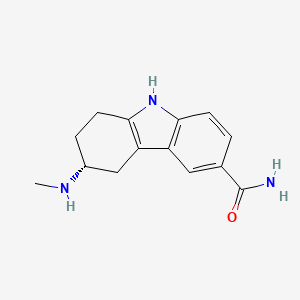 |
0.222 | ||
| ENC001931 | 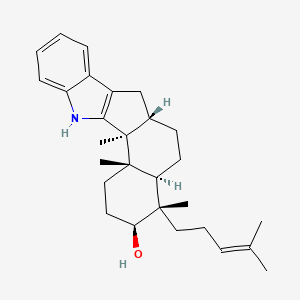 |
0.406 | D0U3SY | 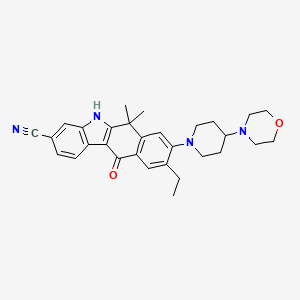 |
0.219 | ||
| ENC003874 | 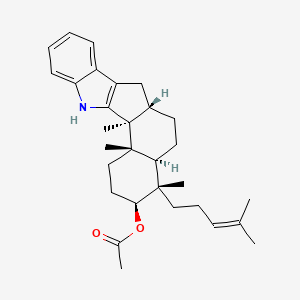 |
0.393 | D0N0RU | 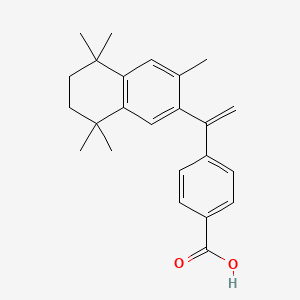 |
0.218 | ||